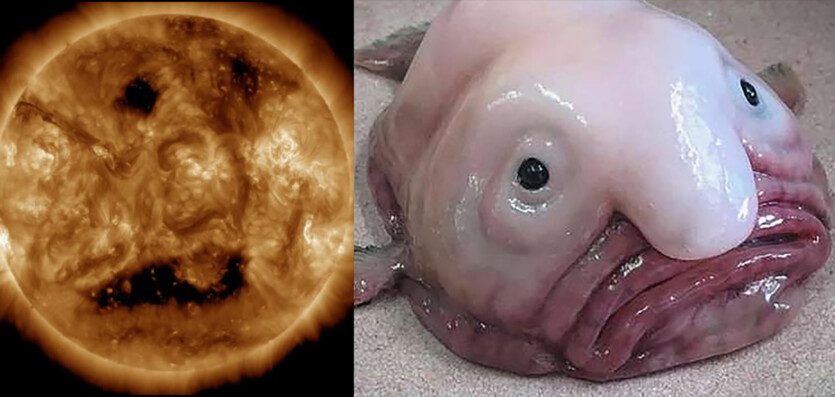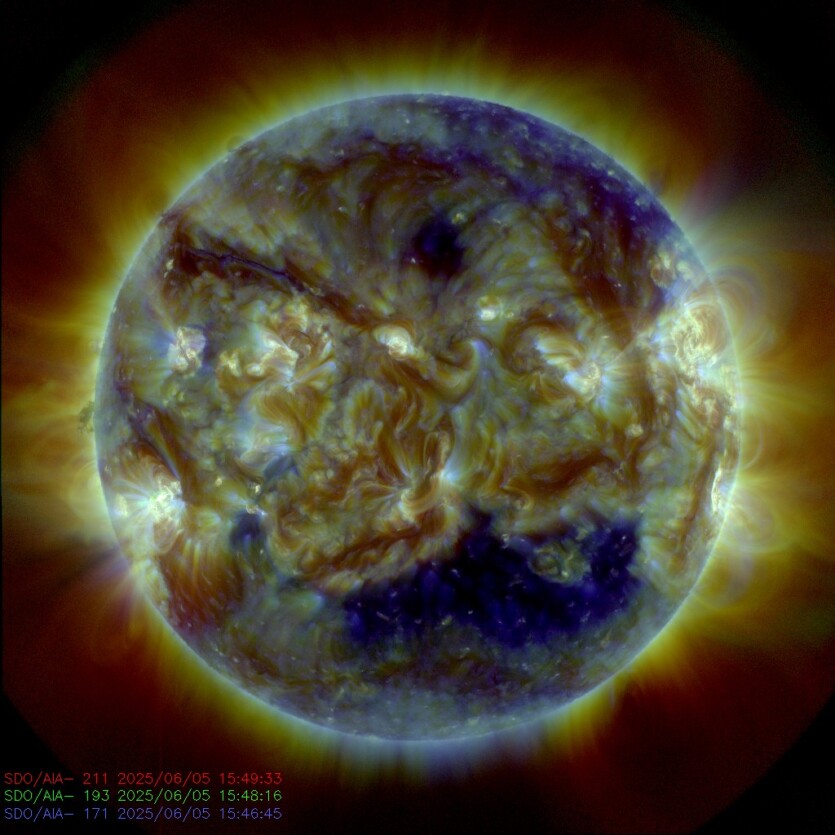
Giant a coronal hole in the Sun a mouth-like vortex about the size of five Jupiters spews hot streams of solar wind toward Earth.
In this region, the plasma density and temperature are lower and the magnetic field lines are open, allowing the solar wind streams to flow into space. If you look at the Sun in the optical wavelength range, you will see nothing. However, in ultraviolet light, coronal holes will appear as large, void-like black spots.
For now location of coronal holes on the Sun resembles a face with a wide, mouth-like hole in the southern hemisphere and two eye-like spots in the northern hemisphere. Each of these northern spots is about the size of Jupiter. And all three regions eject streams of particles and plasma into the solar system. The solar wind ejected by these coronal holes can cause geomagnetic storms on Earth. This happens when solar wind particles are in contact with our planet’s magnetosphere.

However, these geomagnetic storms are not as strong as those caused by coronal mass ejections on the Sun. Unlike solar flares, during which the magnetic energy accumulated in active regions on the Sun is realized mainly as electromagnetic radiation, during coronal mass ejections this energy is used to accelerate huge masses of matter.
Each coronal mass ejection can contain up to 10 billion tons of matter traveling in space at an average speed of 400 km per second, in the case of ultrafast emissions — up to 2 thousand km/s. Such emissions can cause auroras, magnetic storms, electrical equipment malfunctions, and deterioration of radio communications.
According to the UK Met Office, the next likely increase in solar wind will occur in the southern hemisphere. However, the probability of this is low and in any case will not have a significant impact on the Earth.
A powerful G4 geomagnetic storm raged on Earth on June 1-2 after a prolonged M8.1 solar flare from the active region 4100, which released a large coronal mass ejection that headed toward the Earth.
Fantastic photo by NASA PUNCH: Moon in the halo of the eclipse of the Sun
Source: ScienceAlert

Spelling error report
The following text will be sent to our editors: